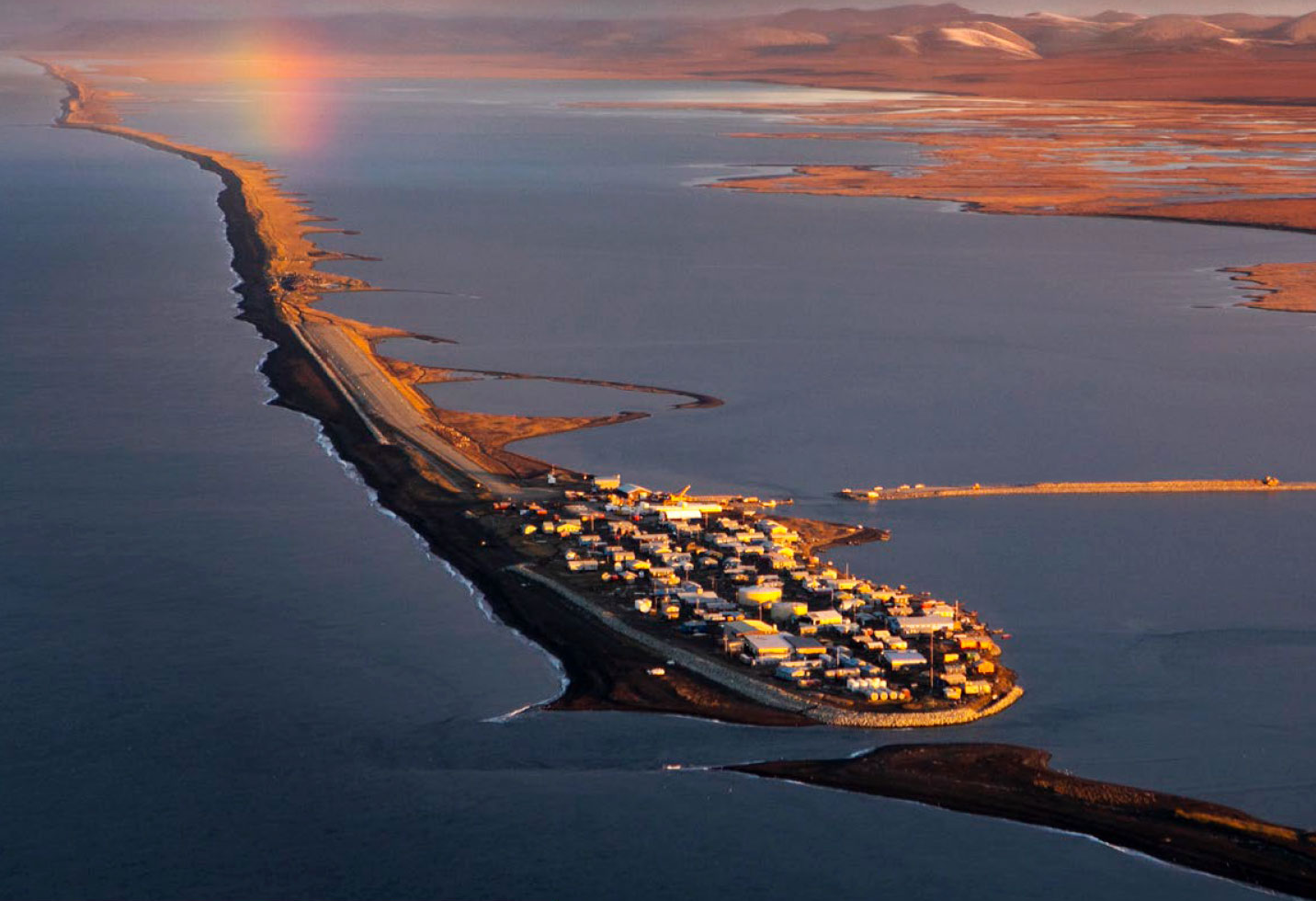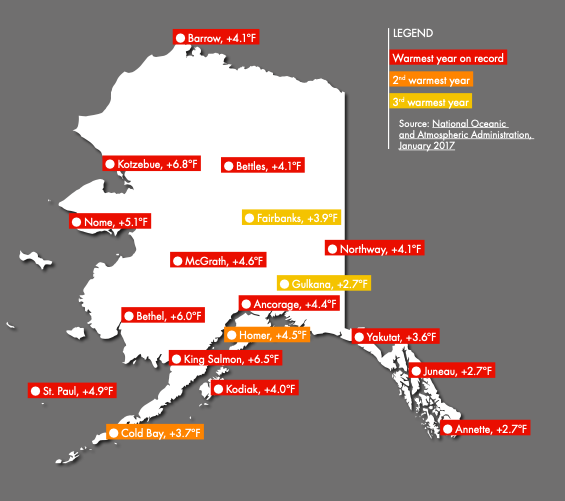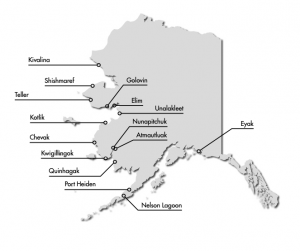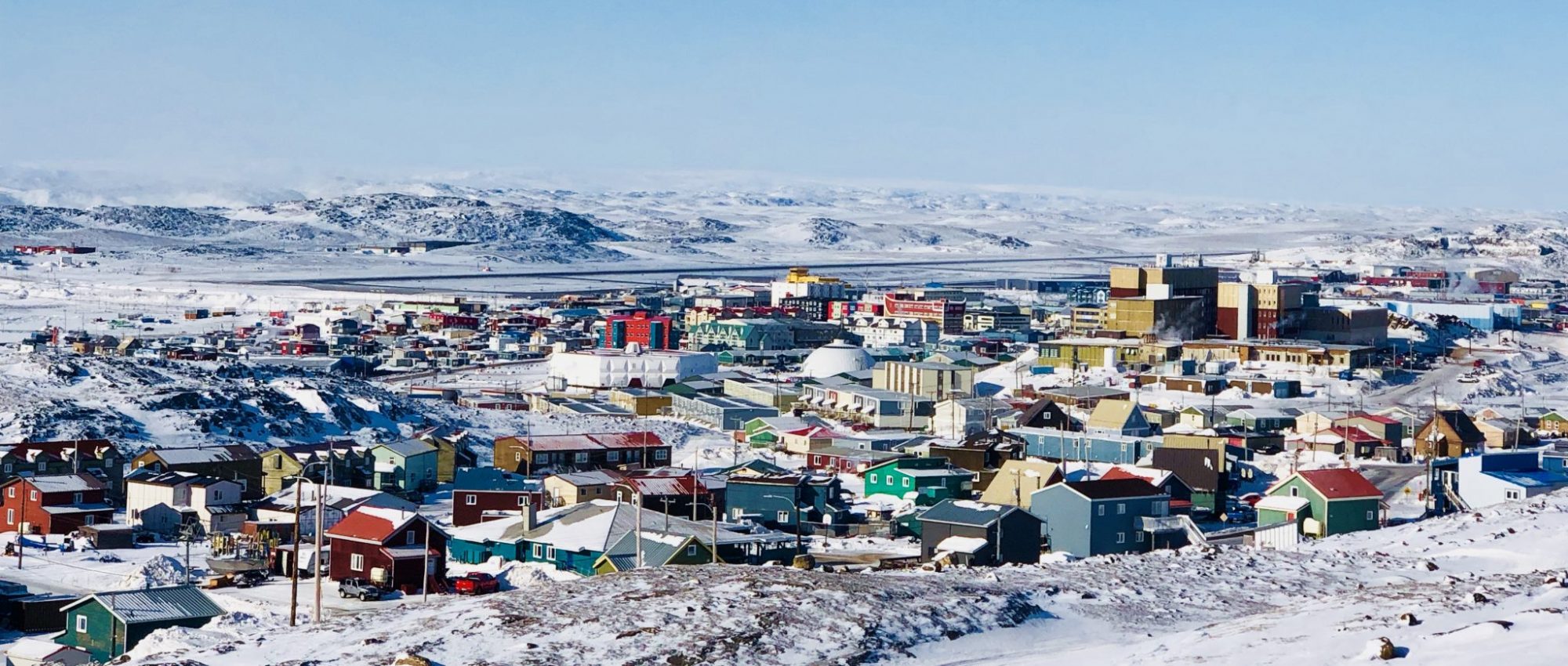
Background

The Arctic is warming 2 to 3 times faster than the rest of the globe, evident in Alaska as the North Slope is warming 2.6 times faster than the continental U.S. These increasing temperatures have largely impacted the presence of sea ice and permafrost located in the region. Sea ice has declined 40 percent in the last 40 years, leaving the shoreline of many Alaskan Native Villages exposed as waves that are able to erode their shore. Moreover, as increased temperatures have led to permafrost thaw, the shorelines are no longer solid and compact, but made up of loose soil that is more easily erodible. In addition, homes and buildings can sink into the ground as permafrost thaws.

The result of this is that 86 percent of Alaska Native villages, or 184 communities, are currently affect by flooding and erosion. 31 of these communities are imminently threatened by flooding and erosion, 15 of which were exploring relocation options for part of all of their village.
Unfortunately, there is no federal or state government agency that has the mandate or the funding to implement relocation if a community decides to move. As such, each community is left to untangle the patchwork of federal and state agencies that have jurisdiction over disaster related efforts. Yet, this web of agencies is not strong enough to support Alaskan native villages as each agency has various shortcomings that prevent them from fully helping.
The Case Study of Newtok
Of the 15 or so Alaskan Native Villages that have been developing relocation strategies, none have been more successful that Newtok. Newtok is a village of less than 400 people that lies near the Ninglick River. Due to climate change, the Ninglick River is widening, and the town is losing land to the river at a rate of about 70 to 83 feet per year. They have been fortunate in their relocation efforts, starting early by creating the Newtok Planning Commission, which includes representatives from nine Alaska State government agencies, 10 federal organizations, and regional non-profit groups that has taken successful measures in implementing the first steps of village relocation. They expect to be fully relocated by 2023.
Hear from Romy Cadiente, the relocation coordinator, on the struggle to relocate their community, as well as Gavin Dixon, the development manager for the Alaska Native Tribal Health Consortium, one of the agencies helping the relocation process in the video below:
Presentation
Newtok is a rare success story in Alaska. I invite you to watch my presentation to learn more about why that is the case. In this presentation, you will find more information on how climate change is forcing relocation, gain an understanding of the patchwork of agencies in place to assist these communities, learn about their shortcomings, and encounter possible solutions to this problem.
[ensemblevideo version=”5.6.0″ content_type=”video” id=”14b45bc9-1f61-4c63-b3ba-279826e8fbe9″ width=”848″ height=”480″ displaytitle=”true” autoplay=”false” showcaptions=”false” hidecontrols=”true” displaysharing=”false” displaycaptionsearch=”true” displayattachments=”true” audiopreviewimage=”true” isaudio=”false” displaylinks=”true” displaymetadata=”false” displaydateproduced=”true” displayembedcode=”false” displaydownloadicon=”false” displayviewersreport=”false” embedasthumbnail=”false” displayaxdxs=”false” embedtype=”responsive” forceembedtype=”false” name=”Relocating Alaskan Native Villages”]
Solutions
As mentioned in the presentation, there are various ways in which these communities can be helped. No matter what, there needs to be the creation of a relocation institutional framework to authorize government agencies to provide relocation technical assistance and funding and outline specific steps communities must take to begin a relocation planning process.
This institutional framework could come from an existing agency like the Denali Commission or might need to be started with a brand new agency.
Regardless, the framework is going to need funding. Since relocation efforts are often incredibly costly, ranging from $80-200 million per village, large sums of money are going to need to be raised. Instead of relying on tax revenue, there are two interesting proposals. First, the Alaska Legislature could mandate that oil companies and other large emitters of greenhouse gases establish fund for villages when they need money to pay for climate-induced relocation. Second, money could be diverted from the Alaska Permanent Fund, which currently has a value of $73B. These represent two creative solutions to raise funds to support these villages and communities.
Have more questions? Good! I encourage you to visit our Learn More page in which you will find resources regarding relocation of Alaskan Native Villages.
